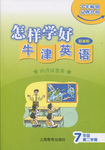题目内容
In a 2004 ________ of college students, it was found that 60 percent of students work during their spare time.
- A.view
- B.inspection
- C.observation
- D.survey
D
解析:
题意:“在一个2004年的调查中发现……”,survey调查。
解析:
题意:“在一个2004年的调查中发现……”,survey调查。

练习册系列答案
 怎样学好牛津英语系列答案
怎样学好牛津英语系列答案
相关题目